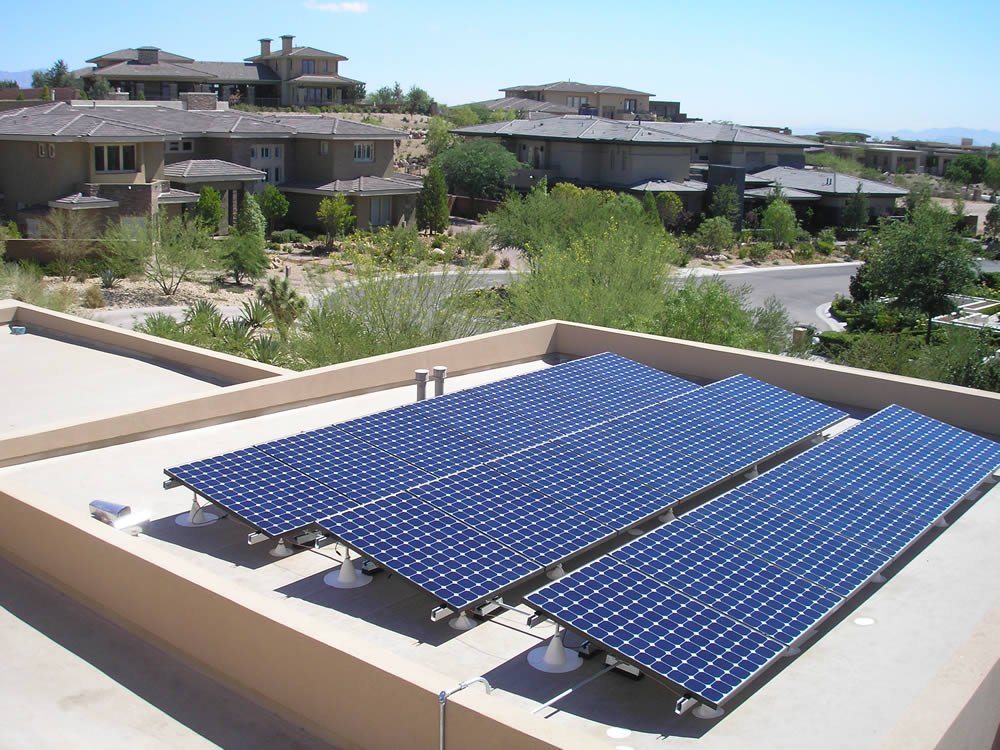After examining it for our garage roof in Minnesota, and getting great input from this forum, we decided against it, mostly because:
1). Hail and other assaults on our roofing: If our roofing has to be replaced, the panels have to come off and then be reinstalled. Any savings we’d enjoyed over time would be lost.
2). Trees and other vegetation, especially on our neighbors’ property, might grow to shade our panels over the next 30 years. Who knows?
3). ERD50 made the good point that a better use of the world’s limited panel supply, from a societal perspective, is on commercial roofs and open lands, which are just better suited for positioning the panels than a home roof; and it’s simply more efficient to install one big commercial roof or landfill, etc. than on a bunch of small residential job sites.
Point 3) is generally true. Walking around my neighborhood, I saw quite a few very poor suboptimal installations, and the most recent one made me cringe. I thought about taking a photo to use as an example of the stupidest installations: 1/2 of the panels would see the clear sky for 2-3 hours each day, because they are shaded by trees in the morning and by the house/chimney in the afternoon. Yet, there are other sections of the roof where more panels could have been mounted. I refrained from taking the photo, because it would be too mean. Of course, this is really the fault of the installer not the homeowner, but the home is what people may identify from the photo.
Anyway, unless your house is very poorly situated, there are reasons for having your own, and this depends on specific situations.
1) In places with a high electricity cost, it may pay to have your own. The payback depends on the rate structure too. Here where I am, the net metering is no longer offered, although old installations were grandfathered in. When more and more solar installations come online, not just residential but also commercial installations, the solar production is higher before noon than it is in the afternoon and it may exceed demand. The sunlight may be the same, but the hotter panels produce less in the afternoon. Yet, due to heat soak, ACs run a lot harder in the late afternoon. Additionally, where I am the ACs have to run hard until past midnight, long past any ray of sunlight.
And that's why more places are doing what makes the most sense: the power that you pump into the grid in the morning is priced a lot lower than what you have to pay when you draw from the grid in the evening. Water during a flood cannot have the same price as it would be during a drought. In fact, when there's no place to store a commodity, the price goes negative. You have to pay for someone to take it, like California had to pay Arizona to take some excess solar power for a period in late spring, according to an article in LA Times that I have cited here in the past.
For a system in an area with a high energy cost, it may make sense to have your own storage, so that you can save the excess power in the morning to use in the evening. My rate is not as high as in CA, but I still pay 24c/kWh for the peak period between 2PM-8PM in the summer, and only 7.3c in off-peak hours. My battery helps to arbitrage this rate difference, when I save the excess power for use when it is worth 24c instead of 7c. My first goal has been to use minimum grid power during the peak hours. My battery often gets enough charge to last till midnight, and even through a 24-hour period when it's not too hot (high in the low 100Fs).
2) The solar+battery is also a backup source when the grid goes down. If you do not have a battery, a grid-tied system does not work when the grid power is lost. If I were in a California area subjected to the dreaded PSPS (Power Safety Power Shutoff), I would install such a system pronto. Having to empty your fridge and take involuntary trips can get old very quick. You can use a backup generator, but the solar+battery has the non-emergency benefit of reducing your high electric bill. The cost is high, so it is not a no-brainer. I value my convenience, but other people have different priorities.




